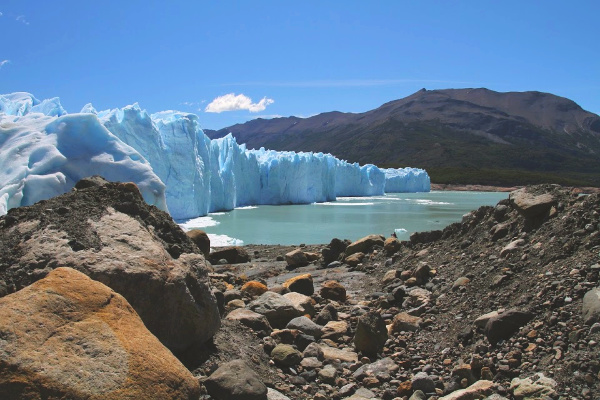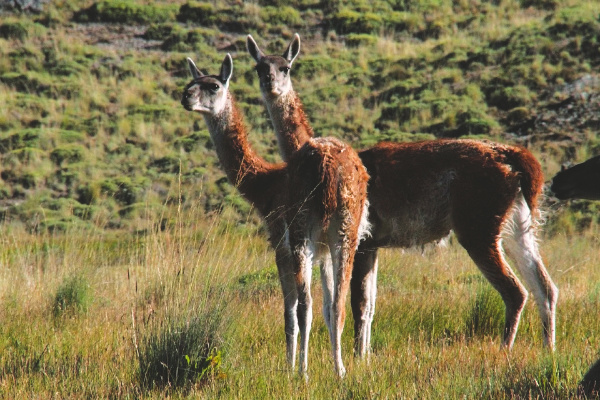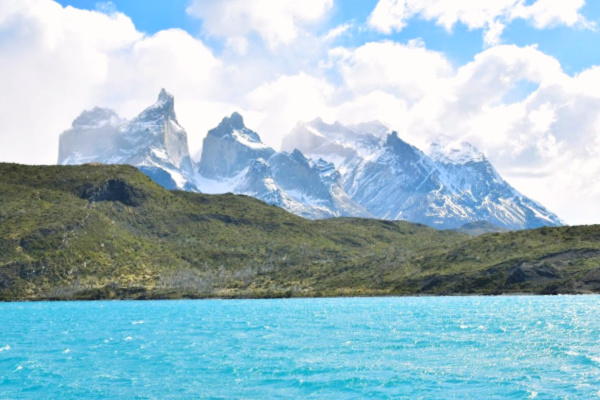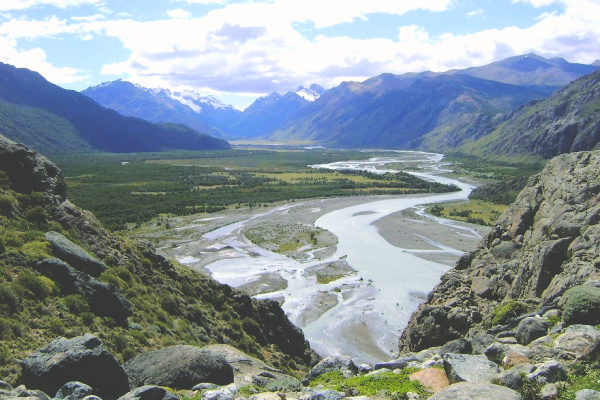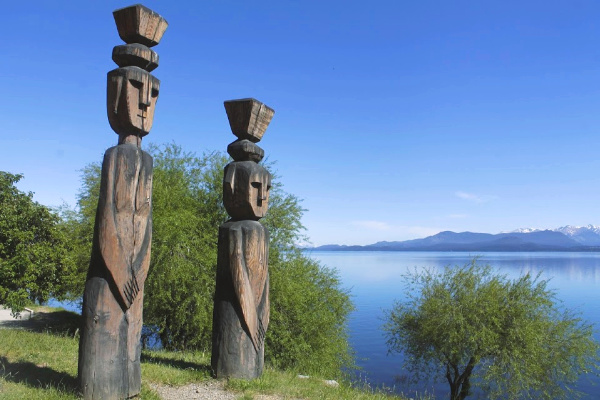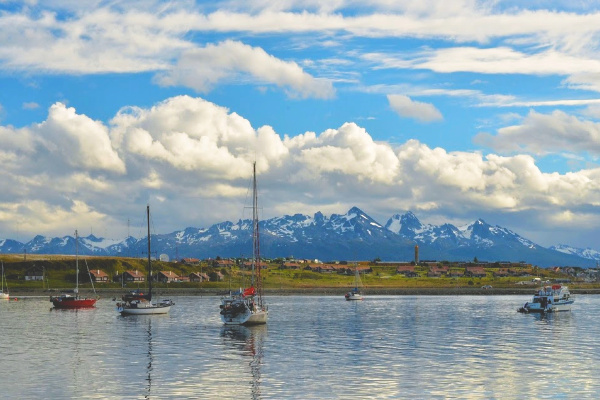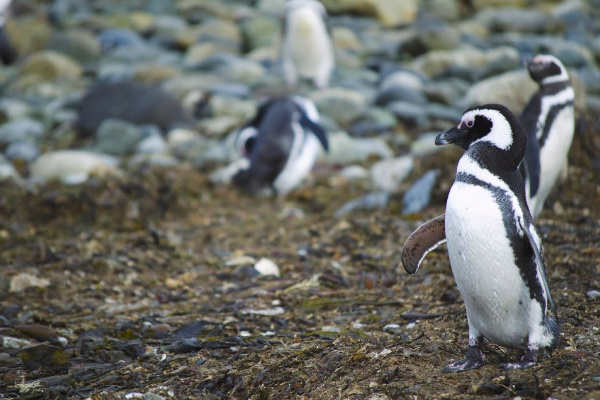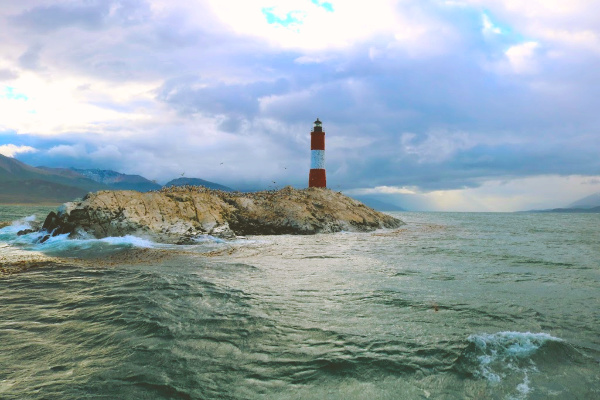When visiting Patagonia, the Argentinian region offers rewarding views of one of the most unique landmarks on Earth. While Los Glaciares National Park is well-known for its rare bird species and lakes, its crowning jewel is Perito Moreno Glacier.
Recognized as one of the only glaciers in the world to still be growing, Perito Moreno sits within Lake Argentino. The lake is a stunning blue from glacial run-off and is constantly bombarded with building-sized sheets of ice that fall from the famous glacier. From boats, travelers can safely view, hear and even photograph these phenomena as they naturally occur.
The more adventurous travelers may consider a guided trekking tour that follows the catwalks and footpaths that cross the glacier in order to get a closer look. Further north in the park, travelers will find camping and intense hiking at Mount Fitz Roy, which can only be accessed through the small town of El Chaltén.
2. Patagonia National Park
The sprawling, 752,503 acres which Patagonia National Parks spans may appear daunting to travelers. However, this may only add to the allure of this national park, as many of the peaks and grasslands remain untouched by humans to this day.
Patagonia National Park is home to the vast biodiversity of native animals and plants, many of which have been reintroduced through conservation efforts. So travelers who do choose to camp should choose to do so with
Patagonia guided tours in order to see the landscape in as responsible a way as possible.
As a haven for hikers, this Chilean national park contains grasslands, Patagonian steppes, and forests, all of which can be accessed through different footpaths. For those who still wish to enjoy the park with suitable amenities, there is a lodge that has a restaurant in the park.
However, since the park is only open October through April, it is crucial that travelers reserve their stay through a guided tour in advance. Similarly, the remoteness of the park is what adds to its singular beauty, but is also the reason for a 300-kilometer drive from the closest airport (Balmaceda, Chile). Even still, the effort to get there is worth it for the views.
3. Cueva de las Manos
A way to quite literally step back in time, Cueva de las Manos is a collection of prehistoric art within the caves in Santa Cruz,
Argentina. Since human activity in the cave is thought to be between 9,000 to 13,000 years old, the site is heavily protected as a UNESCO Heritage Site.
Nonetheless, the hundreds of stenciled hand prints, depictions of guanacos and other scenes from life long ago. Archaeologists have narrowed down three different art forms and the various materials which were used to make the drawings, which only serves to deepen the mystery of their creation.
Access to Cueva de Las Manos requires a car, as its location deep in the Pinturas River valley is remote. There are two gravel highways that encircle the canyon, both of which are stable for most of the year. Even still, tour guides will likely have the best knowledge on what cars are best for reaching one of Patagonia’s lesser known cultural attractions.
As one of the most famous national parks in Patagonia, Torres del Paine National Park is rightfully popular for many reasons. Its name, which is supposedly derived from a mixture of the Spanish word for “towers” and the native Teheulche people’s word for “blue,” was inspired by the three towering slabs of granite that dominate the park.
Travelers to this national park can decide to take a guided tour to the base of them, involve themselves in climbing tours, or stick to the various other tour routes that are just as rewarding. With the many valleys and peaks that the surrounding mountains create are the homes of various endangered animals.
From condors to guanacos, lucky travelers will be able to take photos of some of the most elusive creatures in South America. For those looking to see what the color “blue” truly means, guided tours to massive glaciers, set within their respective lakes, are available for booking in advance. Clearly, it would be difficult to consider a trip through Patagonia as complete without a stop in Torres del Paine National Park.
5. El Chaltén
Within Los Glaciares National Park lies the small town of El Chaltén. While some travelers may overlook this city as they plan their trip through Patagonia, it would be a mistake to do so. This is because, while tiny and sometimes snowed in, El Chaltén is the gateway to treks up Mount Fitz Roy or Cerro Torre.
Park rangers, oftentimes working in concert with tour guides, provide expert information on hiking trails, safety concerns, and the best places to view wildlife within the park. From other pathways directly from the town are footpaths leading to viewpoints of different lakes, glaciers, and even other mountains.
For those who forgot to pack or for those who want to take something home, shops along San Martin street give travelers the ability to do just that. Within the cozy village are roaming packs of dogs, quiet nights, and locals to interact with.
However, during May through September when winter occurs in
Chile, stores and lodges close up as transportation means become minimal. Therefore, it is important that travelers arrange their guided tours from El Chaltén and beyond in advance.
6. Nahuel Huapi National Park
As one of the largest national parks in the world, Nahuel Huapi National Park is special for its massive central lake and extinct volcano. While reaching both of these locations requires extensive hiking and rural camping locations, the effort is well-worth it for adventurous travelers.
Lake Nahuel Huapi, where the national park derives its name from, hosts a small glacier in its center. Those who venture further into the park will discover the imposing natural forces that divided Argentina and Chile. The mountain ridge that runs along their border peaks at Monte Tronador, the extinct volcano whose occasional rumbles shake vast sheets of ice from its crown.
For those visiting Nahual Huapi National Park during Patagonia’s summer, fields of wildflowers extend over the landscape, making for unique photo opportunities. Since Nahuel Huapi is a well-known destination in Patagonia, travelers should consider their travel accommodations before planning their campsites within the park.
Known internationally as the “End of the World,” Ushuaia is unique not only for its location, but also the guided tours that are possible from its borders. While it is quite cold in the town, travelers will find that it is a prime location for
Antarctica cruises to take off from.
Travelers will also find that a scenic car ride or seat on the “Train at the End of the World” will bring them to the nearby Tierra del Fuego National Park. Just off the coastline is Isla Yécapasela, known for its panoramic viewpoints of the famous town and its numerous penguin colonies.
Guided tours of these locations are available, many of which include lodging at the hotels and hostels that Ushuaia has constructed. Those who wish to stay in the city limits will find an afternoon pleasantly spent at the Museo del Fin del Mundo or the surrounding casinos.
A Patagonian location that seems to have it all, Puerto Madryn offers travelers the chance to experience marine wildlife up close and personal. For those who are fans of the small creatures, nearby Punta Tombo hosts hundreds of Magellan penguins. Since these penguins roam freely in the area, they are fine to be photographed, but not touched.
This same restriction goes for their nests, as park rangers wish to minimize any disturbances to the penguins’ natural ways of life. Travelers who wish to get into the water will be excited to know that there are guided snorkeling tours amongst sea lion families. As these animals are very friendly, this is a unique opportunity that is found in few other places in the world.
Those who wish to explore the water by boat may instead choose to undertake a
whale watching tour. Puerto Madryn is a prime breeding location for the animals, who arrive by the hundreds in May through December. Of course, the warm sandy beaches are also tempting and availble for any traveler to relax on, just remember to bring sun screen!
Although it is one of the smaller national parks in Patagonia, Tierra del Fuego National Park makes a name for itself through providing travelers with exceptional views of mountains, glaciers, and different wildlife. While its name may cause travelers to think otherwise, Tierra del Fuego boasts a wide variety of glacial lakes, forests, and valleys.
Unfortunately, due to their remoteness and difficulty to access, much of the park is off limits to travelers. However, through booking a guided tour in advance, travelers can be sure that the pathways they follow are safe and lead to the best views in the park.
One such hike leads travelers to Lapataia Bay, where countless waterfowl, ranging in size and shape make their home. Scaring them in any intentional way is restricted, yet photographs of them in their natural habitat are still possible.
The park may be reached by road or train, as both leave from Ushuaia and are part of the journey to and through Tierra del Fuego National Park.
10. Egidio Feruglio Paleontology Museum
Located in the heart of Trelew City, Patagonia, the Egidio Feruglio Paleontology Museum steps much further in the past than other cultural exhibits in Patagonia. While it is much less well-known than Patagonia’s many national parks, it does not cease to astound travelers with its findings.
As a research center that continues to unearth dinosaur findings to this day, exhibits at Egidio Feruglio Paleontology Museum are constantly changing. Even still, it provides travelers with some context for what they view, as its main permanent exhibit is one that begins with life 10,000 years ago and continues until the “Big Bang.”
To further help visitors envision the processes that go into paleontology, there is a viewing window into the research center where scientists continue to work. It was in the Egidio Feruglio Paleontology Museum that the Titanosaur Patagotitan was discovered and the next major breakthrough in paleontology may just be here as well.

